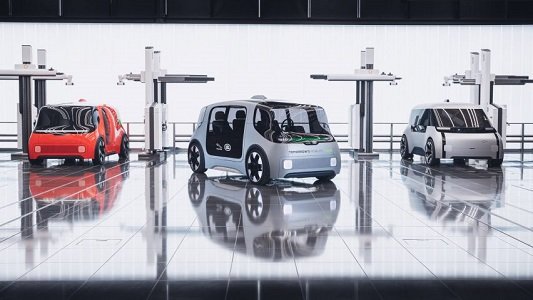
Views: 84
– CASE: Connected, Autonomous, Shared and Electric: defining the future of the automotive sector, which can be more easily achieved thanks to subsidies offered by the government
Minapim by André Janousek and Francisco Tripodi: The Rota 2030 Program – Mobility and Logistics, is part of the strategy developed by the Brazilian Government for the development of the automotive sector in the country. The Program aims to expand the global insertion of the Brazilian automotive industry, through the export of vehicles and auto parts.
Since it was published in 2018, Rota 2030 has generated many discussions about the mechanisms for operating resources from chapter three of the program. Among them, the main rule established is that all resources deposited by companies should be allocated to research, development and innovation activities carried out by Institutes of Science and Technology (ICTs), educational institutions and public companies that maintain investment funds for companies technology-based and social organizations or autonomous social services.
A few years ago, an ICT focused on the development of hardware and software technologies, such as: microelectronics, artificial intelligence, visual computing or big data, probably would not have its solutions easily absorbed by the mobility segment. However, the automobile market has evolved, and the current moment provides the creation of these incentives directed to research and technology. Evidence of this is that now almost everything that is said in the sector is related to the acronym CASE, which, for many, defines the future of the automotive sector:

Connected: connected cars are already a reality, and the arrival of 5G technology in Brazil, which should occur by 2021, will allow them to perform more complex skills, such as sharing information with other vehicles more quickly and accurately.
Autonomous: the dream of riding in a fully autonomous car is still far from the Brazilian reality, but autonomy, even at low levels, is already present in some models. Technologies such as autopilots and autonomous braking systems significantly increase safety on the streets and already integrate some vehicles.
Shared: the technology is already used by several companies, such as Uber and Waze, and has long been on the radar of automakers, as it is seen as one of the most promising solutions for chaotic Brazilian traffic.
Electric: the first electric-powered vehicle was developed in 1835, but only a few years ago became popular. Whether for the appeal of non-dependence on fossil fuels, for the survival of the planet with the reduction of carbon emissions or, simply, for the cost of fuel, it is certain that the technology is here to stay.
In all of the above points there are Brazilian technologies developed, including by ICTs, and available to be applied in projects subsidized by Rota 2030. The alternatives are numerous. Another important aspect in favor of the use of Brazilian ICTs in chapter three of Rota 2030 is due to the exchange rate variation. In addition to Brazil being an exporter of technology labor, including several unicorns being successful worldwide, local labor is low cost due to the devaluation of the Real (Brazilian currency) against other currencies.

It remains for companies to make use of available resources, structure their R&D processes and start operating on the concept of open innovation, through ICTs and universities, accelerating the process of absorbing global technologies and, perhaps, developing their own technologies. In addition, we cannot forget about vehicles powered by ethanol, a technology developed here and promoted by Chapter one of Rota 2030, through a 3% reduction in the Industrial Production Tax – IPI.
It is important to remember that projects developed by companies in the automotive sector in partnership with an ICTs accredited by the Brazilian Company for Industrial Research and Innovation – Embrapii, can have more than 70% of the costs paid by the Government, when combined with Rota 2030 and the Lei do Bem (Tax incentives for legal entities that carry out research and development of technological innovation).
At the Eldorado Research Institute (Campinas SP.), The Institute’s core technologies are available to the automotive market, including: artificial intelligence, microelectronics, visual computing, big data and analytics, IoT, augmented reality, connectivity and integration with android auto and car play, cluster development, telemetry and trackers, cloud software and information security, power system charging and management. All of them are widely applied in global companies in the Information and Communication Technology sector.
Regarding Pieracciani in SP, A team of specialists in funding for innovation is able to make companies take advantage of all potential of the various funding lines available in the National Innovation System, combining them in a wide and safe manner.
Related article: EV – Toyota plans to launch its first full EVs, in a deal with China’s BYD